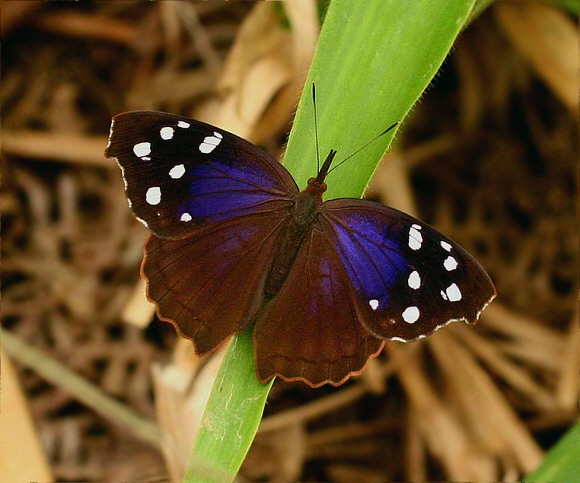 Eunica cuvierii, male, Caranavi, Yungas, Bolivia – Lars Andersen
Eunica cuvierii, male, Caranavi, Yungas, Bolivia – Lars Andersen
Introduction
The genus Eunica contains 40 species colloquially known as Purplewings due to the dazzling purple or metallic blue iridescence on the uppersides of the males. Females lack the iridescence, and are typically a dull earthy brown colour with a diagonal white band across the forewings. The underside hindwings of most species are beautifully marbled, and bear a distinctive arrangement of ocelli.
Eunica cuvierii is unusual because it has very long labial palpi, a fact which led early entomologists to mistakenly consider it to be one of the Libytheinae “Snout” butterflies. The differences between cuvierii and the majority of other Eunica species are quite significant, and it seems inevitable that this species will ultimately be reclassified under a new genus or subgenus.
Eunica cuvierii is found in southern Brazil and Bolivia.
Habitats
This species inhabits primary rainforest and transitional cloudforest at elevations from 400-1400m.
Lifecycle
The lifecycle of Eunica species in general is poorly known and I can find no published details of the early stages of this species. The eggs of most Eunica species are laid singly on the flowers and leaf buds of trees including Mabea ( Euphorbiaceae ) and Bursera ( Burseraceea ). The larvae are likely to vary considerably in colouration and pattern from species to species, but generally have short spines along the sides, and a single row of longer erect spines on the last 3 segments of the body.
Adult behaviour
Both sexes are considered rare. Males are usually seen singly when imbibing mineralised moisture from road surfaces, forest tracks or river sandbanks.
